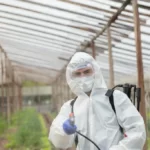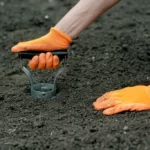Moving plants across the country can be as challenging as it is necessary for gardening enthusiasts. Unlike most belongings, plants require special attention and care during relocation to ensure they survive and thrive in their new environment. This article guides you through the essential steps of moving your plants long distances, focusing on preparation, transportation, and acclimation. With the right approach, you can help your green companions adjust seamlessly to their new home.
Legal and Regulatory Requirements
Before you start packing your plants, it’s crucial to understand the legal aspects of transporting them across state lines. Each state has its own set of regulations designed to prevent the spread of pests and diseases. For instance, some states require a phytosanitary certificate for certain plants, while others may have restrictions on specific species. It’s advisable to check the National Plant Board website for state-specific regulations. Additionally, if you’re moving internationally, the U.S. Department of Agriculture (USDA) has guidelines that must be followed. Being aware of these requirements can prevent any legal issues and ensure the safe transport of your plants.
Preparing Plants for the Move
Preparation is key to ensuring your plants survive the journey. Start by evaluating which plants are sturdy enough to withstand the move. Delicate, diseased, or pest-infested plants might not survive the stress of relocation. About three weeks before the move, begin preparing your plants. Prune larger plants to make them more manageable and remove any dead leaves or branches. This not only reduces the size of the plant but also encourages new growth after the move.
Next, check for pests and treat any infestations. You don’t want to bring pests into your new home or risk violating state regulations. A week before your move, transfer plants from ceramic or clay pots into plastic ones. This reduces the risk of pots breaking and makes your plants lighter and easier to transport. Remember to water your plants adequately in the days leading up to the move, but avoid overwatering. You want the soil to be moist, not soggy, on moving day.
Choosing the Right Containers and Packing Methods
Selecting appropriate containers and packing methods is essential for the safe transport of your plants. Lightweight plastic pots are ideal for moving plants, as they are less likely to break and are easier to handle than ceramic or terra cotta pots. When transferring plants into plastic pots, be sure to use fresh potting soil to provide nutrients and support for the plants during the move.
For packing, use sturdy boxes that can comfortably hold the pots. To prevent tipping, fill any empty spaces in the boxes with bubble wrap, packing peanuts, or crumpled paper. For tall or hanging plants, consider using open boxes or crates that allow them to stand upright. Secure the plants in place with additional packing materials to prevent shifting. If you have delicate plants or succulents, wrap them gently in newspaper or bubble wrap for extra protection. Label the boxes with “Fragile” and “This Side Up” to ensure careful handling during the move.
Maintaining Plant Health During the Journey
The journey is perhaps the most stressful part for plants. To minimize stress and maintain plant health, consider the following tips. If you’re traveling by car, try to keep the plants in a temperature-controlled environment, avoiding extreme heat or cold. For long trips, don’t forget to crack a window for ventilation if plants are inside a vehicle for extended periods.
Water your plants as needed, but be cautious not to overwater, especially if the journey will take several days. Excess water can lead to root rot or fungal growth. If your travel involves overnight stays, bring the plants indoors to protect them from temperature extremes and potential theft.
Light is another critical factor. While plants can generally survive a few days without direct sunlight, try to provide some natural light during stops or when possible. For longer journeys, consider a portable LED grow light to provide supplemental light.
Acclimatizing Plants to Their New Environment
Once you arrive at your new home, your plants will need time to adjust to their new environment. Begin by placing them in similar lighting conditions as they were accustomed to previously. Avoid the temptation to immediately place them outside if they were indoor plants, or vice versa. This gradual approach helps reduce shock and allows your plants to adapt to the new climate and light conditions.
Over the next few weeks, monitor your plants closely for signs of stress, such as leaf drop, wilting, or discoloration. Adjust their watering schedule according to the new environment’s humidity and temperature. If you’ve moved to a different climate zone, research the specific needs of your plants in this new setting. Some may require more shade or sun than they did before, or different watering and feeding schedules.
Finally, after your plants seem to have adapted to their new environment, you can repot them back into more permanent containers if desired. Choose pots and soil that are appropriate for the plant’s size and type. This is also a good time to give them a boost with some plant food or fertilizer, to help them recover from the stress of moving and encourage new growth.
Conclusion
Moving plants across the country requires careful planning and attention to detail, but with the right preparation, your green friends can thrive in their new home. By understanding legal requirements, preparing your plants, choosing suitable containers, and maintaining their health during the journey, you set the stage for a successful move. Remember, patience is key; give your plants time to adjust to their new environment. With love and care, they will continue to grow and bring beauty to your new space.



